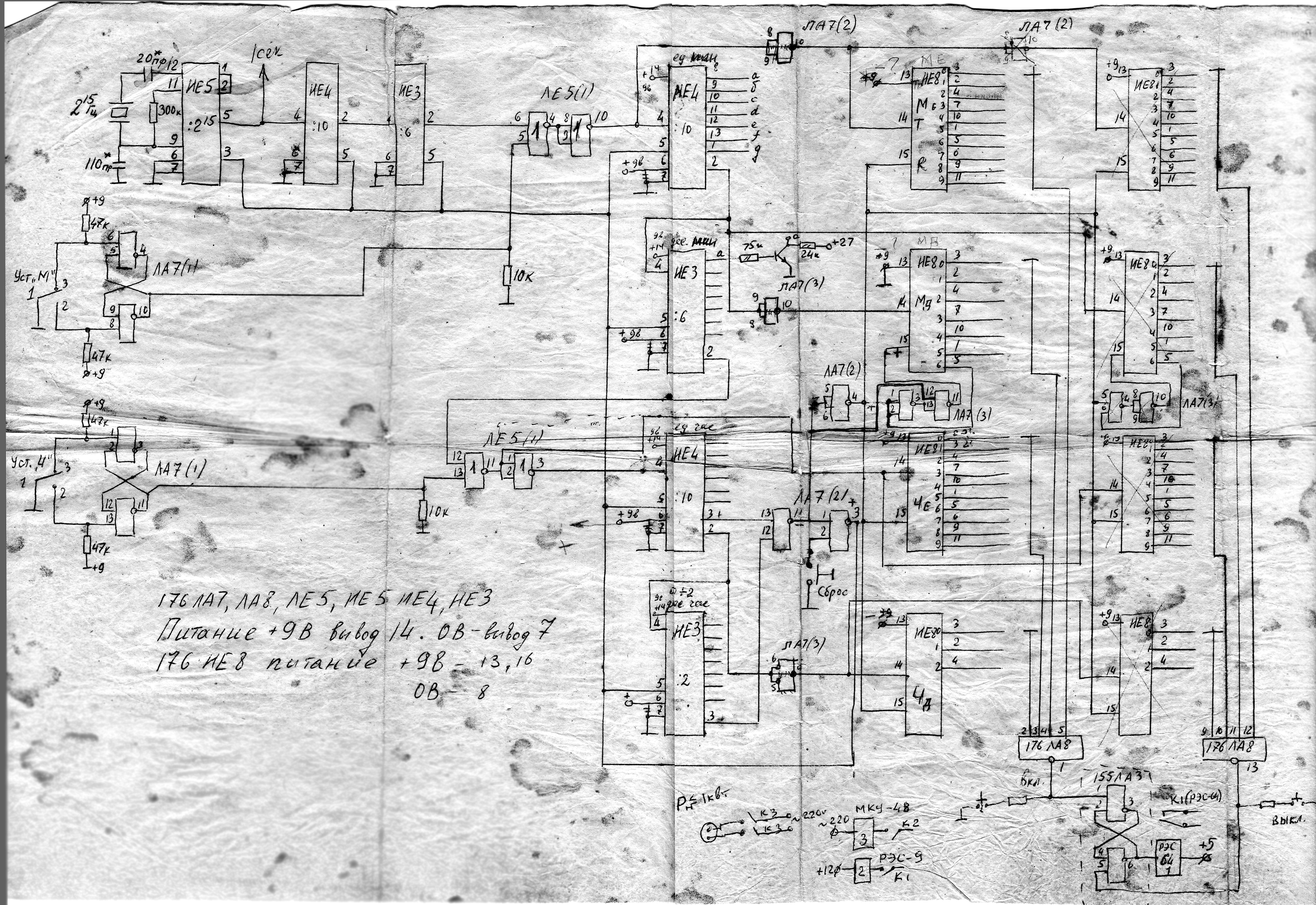Retro electronics. Smart watch from the 80s
 The end of the 1970s. Until the first mass home computers a few more years.
The end of the 1970s. Until the first mass home computers a few more years. In the morning I wake up not to the sounds of an ordinary mechanical alarm clock. And not even for electronic picking. I wake up to the sounds of the Time program. The TV turned on itself, according to the schedule.
According to his father (radio engineer): “in the late 70s, the era of digital microcircuits was just beginning, radio designers liked the CMOS for K176 - a series of microcircuits with low current consumption (up to 0.5 mA), good noise immunity and high stability.”
Around those years, he made an electronic clock with a time relay. The relay allowed either to beep the sound signal, or turn the standard electrical appliance on and off according to a schedule.
Brief description of the product and operating principles:
The master oscillator is made on a K176ie5 chip and quartz with a frequency of 32768 Hz. Next, the signal from the chip in 1 sec. arrives at the input K176ie4, K176ie3, which are connected through transistors kt315 for each segment to the indicators IV-22 (also very durable) - this is how units and tens of seconds are formed on the dial.
After this, a signal of 1 minute enters through K176 le5 to the following counters ue4, ue3, which form units and tens of minutes, and then units and tens of hours. In parallel with these 4-rem microcircuits, K176 ие8 microcircuits are connected - decimal dividers of counters with position outputs for decimal-section switches. They set the time for switching the relay on and off using the K176 la8 chip (coincidence scheme). From this chip there is a signal to the sound generator and low-power relay RES-64. This relay includes the following relay RES-9, more powerful. And RES-9 already includes an actuating relay MKU-48, which can easily withstand a load of 1 kW.
Most of these microcircuits were considered almost a military supply, they were very durable, but could not be found on sale. But in their circles you could get everything if you knew what to look for and who to go to - in those days, enthusiasts could simply share something just for an idea.
The case was made of getinax plates, with a drill, neat holes for the speaker were cut out on the basis of the k155 la7 chip. Design "Soviet", functional, no frills.
But instead of a dull mechanical alarm clock, we had a TV, and the schedule of programs on central television at that time was strictly observed, so we could safely be sure that at 8:00 in the morning we would hear the sounds of the “Time” program with a cheerful melody. Or it was possible to connect a radio tape recorder, or a tape recorder in which the cassette was rewound in advance at the right time and the mechanical Start key was already pressed, it only remained to click on the power relay.
The clock moved to an old country house a long time ago, but the picture shows that they still work fine - the time indicators have not faded at all. Also visible are the switches for setting the time, turning the device on and off, as well as a button to turn off the alarm and a reset button for seconds. Entrance and exit for 220 sockets on the reverse side, they are not visible.

Now more than 40 years have passed, and the clock works without a single breakdown, except that when disconnecting from the power supply, now you have to manually set the time - earlier, in case of power failure, it was supported by a small battery of 9v, 1000mA - it could keep the watch autonomous for 2- x days.
Now he has already exhausted his resource, and there is no sense in changing it.
Even a sketch of the scheme has survived. Although, why a sketch - in those years it was a very high-quality drawing for work.
Scheme (~ 7 mb)

Update:
Regarding the dispute about the Vremya program at 8:00 a.m. - we are talking about Kiev - on the first channel in these years the morning issue of the Vremya program was broadcast at 8:00 a.m.
